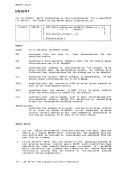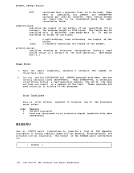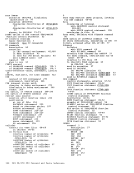LINEDIT Macro Use the DISP operand to specify the output disposition of the edited
line. The format of theDISP operand is: DISP= DISP=TYPE NONE PRINT SIO CPCOMM ERRMSG specifies that the message is to be displayed on the terminal.
This is the default disposition.DISP=NONE specifies that no output occurs. This option is useful with the BUFFA operand. DISP=SIJ specifies that the message is to be displayea, at the terminal,
usingSIO instead of TYPLIN, which is normally used. This option
is used byCMS routines in cases where free storage pointers may be
destroyed.Since lines are not stacked in the console buffer, no CONWAIT function is performed. DISP=PRINT specifies that the line is to be printed on the virtual printer.
The first character of the line is interpreted as a carriage
control character and as such does not appear on the printed
output.(See the discussion of the PRINTL macro for a list of
validASA control characters., DISP=CPCOMM specifies that the line is to be passed to CP to be executed as a CP command. For example:
LINEDITTEXT='QUERY USERS',DOT=NO,DISP=CPCOMM results in the CP command line being passed to CP and executed. On return, register 15 contains the return code from the CP command
that was executed.DISP=ERRMSG specifies that the line is to be checked to see if it qualifies for
error message editing. If it does, it is displayed as an error
message rather than as a regular line.
The standard format ofVM/370 error messages is:
xxxmmmnnns
where xxxmmm is the name of the module issuing the message, nnn is
the message number, and s is the severity code.You can code
whatever you want for the first nine characters of the code when
you write error messages for your programs, but the tenth character
must specify one of the followingVM/370 message types: Warning Frror
section 6.CMS Macro Instructions 327
line. The format of the
This is the default disposition.
using
is used by
destroyed.
The first character of the line is interpreted as a carriage
control character and as such does not appear on the printed
output.
valid
LINEDIT
that was executed.
error message editing. If it does, it is displayed as an error
message rather than as a regular line.
The standard format of
xxxmmmnnns
where xxxmmm is the name of the module issuing the message, nnn is
the message number, and s is the severity code.
whatever you want for the first nine characters of the code when
you write error messages for your programs, but the tenth character
must specify one of the following
section 6.






















































































































































































































































































































































































































